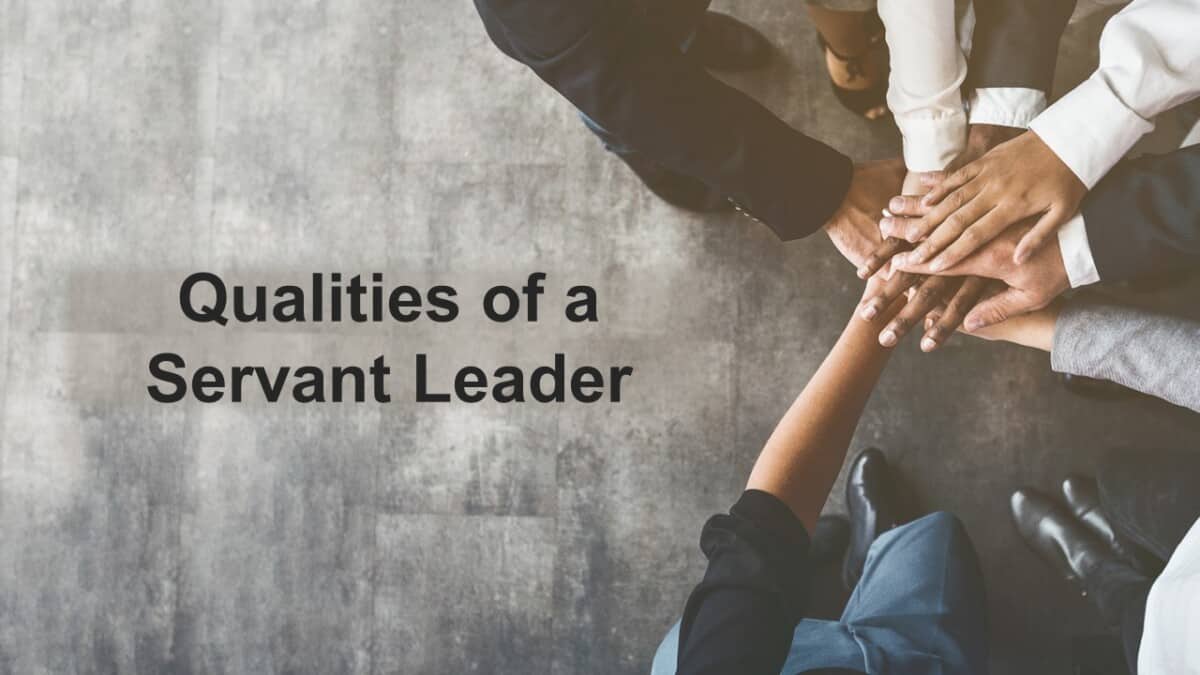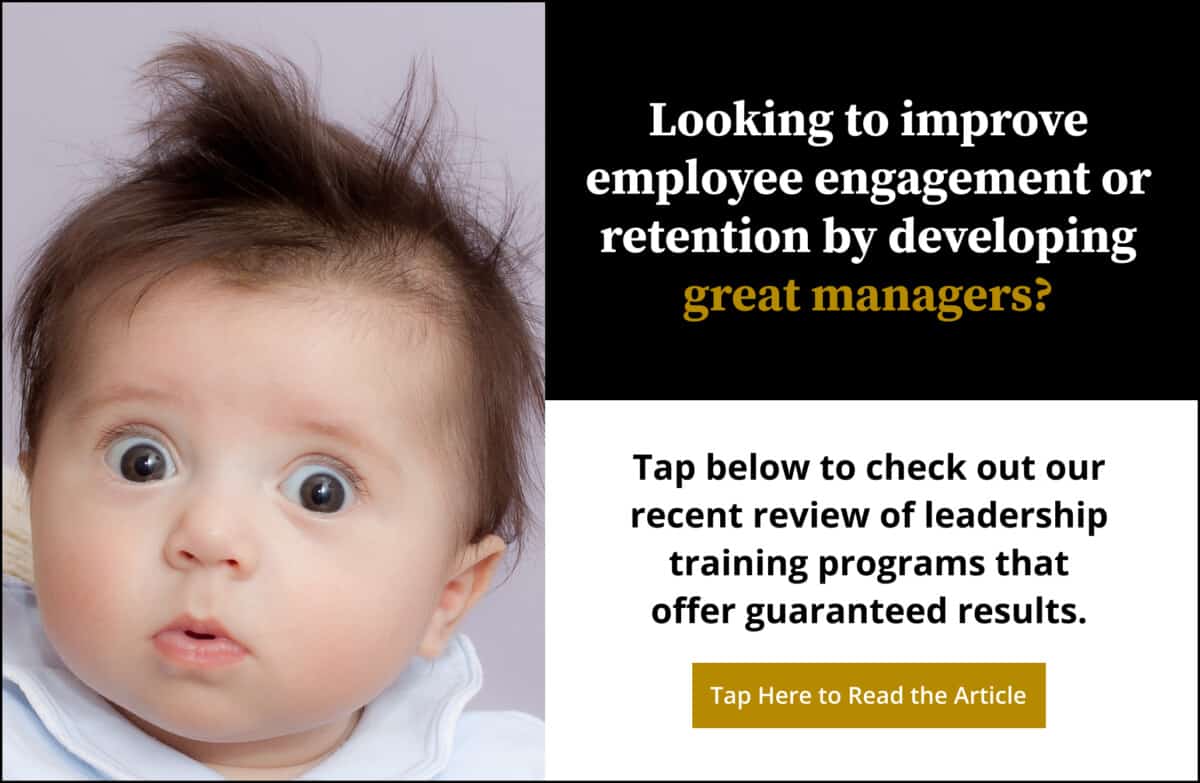Share:

Servant leaders have many qualities that are conducive to building high-performance teams of highly engaged employees.
What makes servant leadership unique, and very different from traditional leadership styles, are the principles that form the philosophy of servant leadership, as articulated by Robert K. Greenleaf.
Greenleaf outlined 10 principles that serve as a blueprint for success for the servant leader. These principles help them develop the qualities that make servant leadership the best leadership style.
The qualities of a servant leader are rooted in the 10 principles of servant leadership: awareness, building community, commitment to the growth of people, conceptualization, empathy, foresight, healing, listening, persuasion, and stewardship, which help leaders be authentic, compassionate, and future-oriented.
This article will explore how the 10 principles of servant leadership help leaders develop the qualities that help them lead high-performance teams who are engaged with their work and committed to achieving the organization’s vision together.


What Is a Servant Leader?
A servant leader is a servant first. Servant leaders are committed to the growth of others, build influence through authentic, trust-based relationships, and achieve goals without jeopardizing the future or harming well-being.
The term “servant leader” was coined by Robert K. Greenleaf, founder of the modern servant leadership movement and the Greenleaf Center for Servant Leadership.
Some traditional leadership styles emphasize control and seeking power, often at the expense of others. They rely on centralized decision-making that focuses heavily on short-term results, often ignoring the potentially harmful long-term consequences of those decisions and their impact on resources.
Greenleaf’s view of leadership was vastly different from the traditional leadership styles of the past. He felt that success is not only achievable but also more sustainable if leaders put people over profits and serve the greater good rather than pursue power.
According to Greenleaf, “The servant-leader is servant first, it begins with a natural feeling that one wants to serve, to serve first, as opposed to, wanting power, influence, fame, or wealth.”
In Greenleaf’s view, leaders must first become servants to lead effectively. He also felt they must lead compassionately and with great understanding to lead well.
This approach to leadership, though less results-focused than other leadership styles, has the benefit of achieving the desired results in ways that are not detrimental to the well-being and psychological safety of others because of its emphasis on compassion.
In my recent interview with investor Piyush Patel, we discussed the valuable role compassion plays in leading well and how a lack of compassion hurts the trust we need to maintain with employees to ensure they perform well, leading to poor performance.
Patel says, “Management stepping over employees to create resolution for customers breaks trust between employees and management. Short-term thinking and focusing on profits will ultimately lead to lack of compassion for your employees. As soon as that happens the quality of your service will begin to decline.”

The main principles of servant leadership help leaders develop qualities like compassion and lead in ways that are sustainable for employees.
Servant Leaders Are Authentic
Servant leaders are guided by an authentic desire to connect with their team members and help them do their best work. Servant leaders do this by building connections with team members that are rooted in trust and authentic influence gained through honesty, transparency, and accountability.
In building authentic relationships with team members, servant leaders are guided by the principles of awareness, listening, and persuasion.
Awareness
“The servant-leader is servant first, it begins with a natural feeling that one wants to serve, to serve first, as opposed to, wanting power, influence, fame, or wealth.”
-Robert K. Greenleaf
A strong awareness of ethics and values, combined with a strong sense of self-awareness, is indispensable to servant leaders and facilitates authentic connections.
When leaders are self-aware, they can accurately perceive their emotions and remain aware of them as they occur, and lead mindfully. Servant leaders tend to possess a high level of emotional intelligence which helps them hone their self-awareness.
According to Greenleaf, when we lack awareness, “we miss leadership opportunities.” When we are aware of ourselves and where our team members are coming from, we are much better leaders of our teams.
Listening
“Don’t assume, because you are intelligent, able, and well-motivated, that you are open to communication, that you know how to listen.”
-Robert K. Greenleaf
Employees become disillusioned with their leaders and, eventually, disengaged with their work when they don’t feel heard, and leaders miss out on helpful feedback when they don’t engage in active listening. When employees feel their voice is heard, they are 4.6 times more likely to feel empowered to do their best work
This is why servant leaders listen without judgment and are always open and receptive to feedback from their teams. Unbiased listening leads naturally to understanding, which is so important for building trust with our team members.
Persuasion
“A fresh look is being taken at the issues of power and authority, and people are beginning to learn, however haltingly, to relate to one another in less coercive and more creatively supporting ways.”
-Robert K. Greenleaf
Rather than relying on positional authority, to help drive decision-making, servant leadership relies on persuasion. Persuasive leaders make rational arguments for action in ways that elicit a strong positive emotional response from those they lead.
Servant leaders want to convince, not coerce, and work to build consensus on their teams. It’s not about getting employees to comply, it’s about helping them understand the decision-making process and be participants in it.
Servant Leaders are Compassionate
Sympathy helps us feel sorrow for another’s misfortune. Empathy helps us understand and share the feelings of another. Compassionate leadership is what you get when you mix traditional leadership skills with a hearty dose of empathy, sympathy, and compassion.
While empathy is one of the 10 tenets of social leadership, the true servant leader incorporates healing (another of the 10 tenets) into the process, which helps them move beyond feelings of sympathy and empathy and take action to heal the suffering of others, which facilitates a sense of community that can extend beyond the organization.
Empathy
“The servant always accepts and empathizes, never rejects.”
-Robert K. Greenleaf
A recent study by Catalyst found empathy may be one of the most important leadership skills because of its positive effects on innovation, engagement, retention, inclusivity, and work-life balance.
Empathy is key to helping a team grow. When we empathize, we understand and share the feelings of another person.
Servant leaders seek not only to understand where their employees are coming from, but also seek to empathize with them to better serve them. They listen with empathy, understand with empathy, lead with empathy, and encourage empathetic behaviors in their employees.
Healing
“There is something subtle communicated to one who is being served and led if, implicit in the compact between servant-leader and led is the understanding that the search for wholeness is something they share.”
-Robert K. Greenleaf
Compassionate leadership is fundamental to servant leadership. It helps us turn empathy into action and relieve, or heal, the suffering of others.
According to Larry C. Spears, one of the great strengths of servant leadership is its potential for transformation through healing–healing of one’s self and one’s relationship with others.
Servant leaders recognize that leadership provides them with the opportunity to improve people’s lives and help them overcome past hurts.
Building Community
“All that is needed to rebuild a community as a viable life form for large numbers of people is for enough servant-leaders to show the way, not by mass movements, but by each servant-leader demonstrating his or her unlimited ability for a quite specific community-related group.”
-Robert K. Greenleaf
It can be difficult to build a strong sense of community at work, especially in large organizations.
Servant leaders recognize the importance of building community and forging connections that help those they lead not only do the best work but also take pride in doing that work. They also recognize the great potential in building such connections beyond the confines of the organization.
Whether it is helping coworkers connect or helping the organization connect with the community it serves, it doesn’t have to be an ambitious undertaking; small actions by many have a profound impact. This is the key to building community.


Servant Leaders Are Future Oriented
Servant leaders are, by principle and practice, visionaries, and their visionary perspective helps them set long- and short-term goals that will achieve the organization’s vision for the future without doing harm in the present.
Servant leadership emphasizes a strongly ethical approach to leadership that puts people before profits and seeks to move forward in sustainable ways.
Servant leaders help their teams achieve great things, sustainably and consistently, by utilizing the principles of conceptualization, foresight, and stewardship.
Conceptualization
“… vision, without which we perish, is required to open us to willingness to use what we know and to work to extract hard reality from a dream.”
-Robert K. Greenleaf
While many managers often become so focused on achieving short-term operational goals that they miss the big-picture view, servant leaders can look beyond day-to-day realities and analyze problems from a conceptual perspective.
The best servant leaders involve their team members in the process and understand that diverse points of view lead to innovative solutions.
The big-picture view of the servant leader helps their teams strategize, find meaning in their work, and see its impact, which is vital to motivating and engaging employees.
Foresight
“Prescience, or foresight, is a better than average guess about what is going to
-Robert K. Greenleaf
Foresight refers to the ability to foresee possible outcomes of situations and approaches to addressing those situations and is closely linked with conceptualization.
Foresight helps servant leaders identify the best approaches and the ones that are most closely aligned with the organization’s mission and achieving its vision.
Servant leaders don’t wait until change is inevitable and react. They learn from past mistakes, have an awareness and understanding of the current reality, and consider the pros and cons of a decision and its impact on the future.
Stewardship
“The problem of doing better in the modern world, as I see it, is this: How can people perform better in, and be better served by, institutions—especially large ones?”
-Robert K. Greenleaf
Being a good steward of the people and resources they manage is important to the servant leader.
Stewardship is closely tied to foresight and conceptualization because the ability of a leader to take great care of these resources determines the kind of legacy they leave for the next generation of leadership.
Servant leaders seek to improve the lives of team members who, in turn, seek to improve the performance of the organization and the lives of others through their work.
A culture of good stewardship helps employees find meaning and purpose in their work and makes them feel satisfied in their roles, committed to the organization’s success, and motivated to perform well.
Stewardship is the ultimate guiding force of the servant leader as they tend to the growth and success of their teams. It’s not just about working toward the greater good and demonstrating a commitment to serving and meeting the needs of others—it’s also about getting the people you lead on board so that everyone is united with a shared sense of purpose that will live on well into the future.
Commitment To the Growth of People
“The secret of institution building is to be able to weld a team of such people by lifting them up to grow taller than they would otherwise be.”
-Robert K. Greenleaf
Servant leaders are committed to the growth of all their team members and interact with them in ways that facilitate and encourage growth.
Through the lens of servant leadership, leaders can see the intrinsic value their employees bring to the table, which goes beyond their more tangible contributions or the monetary success they can help the organization achieve.
Servant leaders nurture the personal and professional growth of employees by providing opportunities for professional development through learning, training, and leadership development.
They also encourage such growth by establishing a healthy system of feedback, coaching teams, and giving employees the autonomy they need to perform well and take ownership of their roles.

Matt Tenney has been working to help organizations develop leaders who improve employee engagement and performance since 2012. He is the author of three leadership books, including the groundbreaking, highly acclaimed book Inspire Greatness: How to Motivate Employees with a Simple, Repeatable, Scalable Process.
Matt’s ideas have been featured in major media outlets and his clients include numerous national associations and Fortune 500 companies.
He is often invited to deliver keynote speeches at conferences and leadership meetings, and is known for delivering valuable, actionable insights in a way that is memorable and deeply inspiring.


